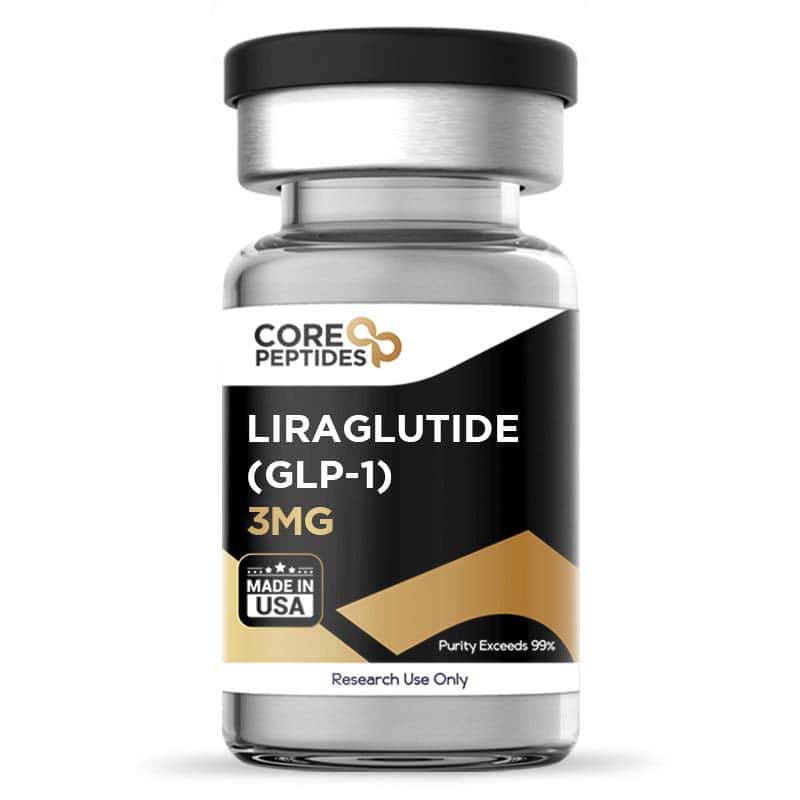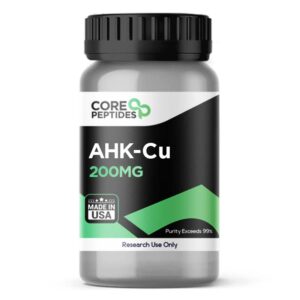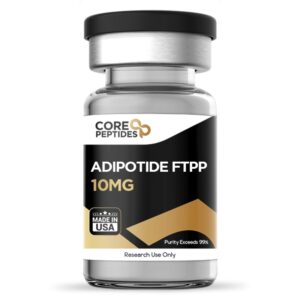Description
Liraglutide (3 mg)
Liraglutide is a long-acting, synthetic analog of the human glucagon-like peptide-1 (GLP-1), a hormone naturally secreted by the intestinal L-cells in response to food intake. As a GLP-1 receptor agonist, Liraglutide binds to and activates the GLP-1 receptor, mimicking the action of endogenous GLP-1. This activation leads to a cascade of metabolic and endocrine effects, primarily focused on glucose regulation and appetite control.
Chemical Structure and Properties
-
Chemical Name: (Des-Arg34) human GLP-1 analog with a C16 fatty acid side chain
-
Molecular Formula: C_172H_265N_43O_51
-
Molecular Weight: ~3751 g/mol
-
Other Names: Victoza® (for diabetes), Saxenda® (for obesity treatment)
-
Formulation: Typically supplied as a subcutaneous injection in 3 mg/mL concentration for weight management
The structure of Liraglutide includes a fatty acid side chain (palmitic acid) that allows non-covalent binding to albumin, increasing its half-life and enabling once-daily dosing.
Mechanism of Action
Liraglutide acts through several interconnected physiological pathways:
-
Glucose Homeostasis
-
Stimulates glucose-dependent insulin secretion from pancreatic β-cells.
-
Suppresses glucagon release from pancreatic α-cells, reducing hepatic glucose production.
-
Slows gastric emptying, which reduces postprandial glucose spikes.
-
-
Appetite and Weight Regulation
-
Liraglutide crosses the blood-brain barrier and activates GLP-1 receptors in the hypothalamus.
-
This may increase satiety, reduce hunger, and lead to decreased caloric intake.
-
Activation in the mesolimbic reward system is thought to reduce food cravings and hedonic eating.
-
-
Cardiovascular Effects
-
GLP-1 receptor activation in the heart and blood vessels may improve endothelial function, reduce blood pressure, and provide cardioprotective effects.
-
Clinical trials suggest Liraglutide may reduce the risk of major adverse cardiovascular events in high-risk patients.
-
Clinical Uses
1. Obesity and Weight Management (Saxenda® 3 mg daily)
-
Approved for chronic weight management in adults with:
-
BMI ≥ 30 kg/m² (obese)
-
BMI ≥ 27 kg/m² (overweight) with at least one weight-related comorbidity (e.g., hypertension, dyslipidemia, type 2 diabetes)
-
-
Mechanism involves central appetite suppression and slowed gastric emptying, leading to significant weight loss over time.
2. Type 2 Diabetes Mellitus (Victoza®, typically 1.2–1.8 mg)
-
Used as an adjunct to diet and exercise to improve glycemic control.
-
Provides HbA1c reduction and may promote modest weight loss.
Pharmacokinetics
-
Absorption: Peak plasma concentration occurs ~8–12 hours after subcutaneous injection.
-
Half-life: ~13 hours, allowing once-daily administration.
-
Metabolism: Metabolized similarly to large proteins; degraded by proteolytic enzymes without significant renal or hepatic involvement.
-
Excretion: Metabolites eliminated through urine and feces.
Clinical Studies and Efficacy
-
Weight Reduction
-
Clinical trials demonstrate average weight loss of 5–10% over 12–56 weeks in obese patients.
-
Higher doses, like 3 mg/day, are associated with greater reductions in BMI and waist circumference.
-
-
Glycemic Control
-
Reduces HbA1c by ~1–1.5% in patients with type 2 diabetes.
-
Reduces fasting and postprandial glucose levels.
-
-
Cardiovascular Outcomes
-
The LEADER trial showed that Liraglutide reduced the incidence of major cardiovascular events in patients with type 2 diabetes at high cardiovascular risk.
-
Safety and Side Effects
Common adverse effects:
-
Gastrointestinal: Nausea, vomiting, diarrhea, constipation (usually dose-dependent)
-
Central: Headache, dizziness
-
Other: Injection site reactions, possible mild increase in heart rate
Serious but rare side effects:
-
Pancreatitis
-
Gallbladder disease
-
Thyroid C-cell tumors (observed in rodents; relevance to humans under investigation)
Contraindications:
-
Personal or family history of medullary thyroid carcinoma (MTC)
-
Multiple endocrine neoplasia syndrome type 2 (MEN2)
-
Hypersensitivity to Liraglutide or any component
Mechanistic Insights in Research
-
Neuroendocrine Effects: Liraglutide reduces food reward by modulating dopaminergic pathways in the brain.
-
Metabolic Remodeling: Encourages improved insulin sensitivity in peripheral tissues, including adipose and muscle.
-
Anti-inflammatory Effects: May reduce systemic inflammation markers in obese patients, contributing to cardiovascular protection.
Summary
Liraglutide 3 mg represents a potent, long-acting GLP-1 receptor agonist with multifaceted actions. Its ability to reduce appetite, promote weight loss, improve glycemic control, and provide cardiovascular benefits has made it a cornerstone in obesity management and type 2 diabetes treatment. Ongoing research continues to explore its applications in neuroendocrine regulation, metabolic syndrome, and cardiovascular health.





Reviews
There are no reviews yet.